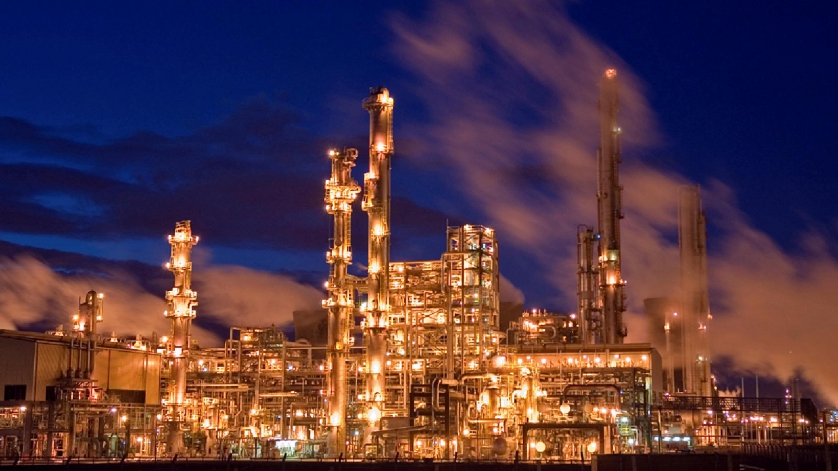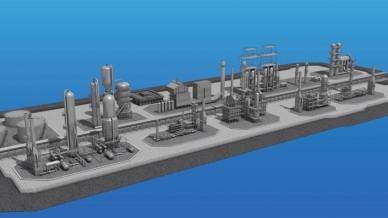
Syngas plants require accurate, reliable temperature sensors to properly monitor the many processes. These include the water gas shift reaction and the process for reducing the copper catalyst. If temperatures veer outside the recommended range, the results are suboptimal reaction rates, reduced catalyst life, and, in extreme cases, reactor failure.
Syngas (synthesis gas) is a mixture of 30–60% carbon monoxide (CO), 25–30% hydrogen (H2), and 5–15% carbon dioxide (CO2), with residual water and methane (CH4). Producing and purifying syngas involves a series of thermo-chemical process that are highly dependent on proper temperature measurement and monitoring, which require an accurate and reliable temperature sensor.
Hydrogen is the desired product of this higher-value intermediary product. Therefore, the higher the percentage of carbon monoxide, the less valuable the syngas is. Furthermore, CO is poisonous to many catalysts and is difficult to remove. (CO2 also poisons catalysts but is easier to remove.)
Water Gas Shift Reaction
“Water gas” and “synthesis gas” are basically the same products: a mixture of CO and H2 created by adding steam to a hot carbon-based feedstock. Water gas, first created in 1828, is the older terminology. From that we get the term water gas shift (WGS) reaction, a process that converts carbon monoxide to carbon dioxide and hydrogen in the presence of water, a catalyst, and temperatures between roughly 400°F and 900°F (204°C to 482°C). The WSG process is exothermic and is favored by lower temperatures.
CO + H2O ↔ CO2+ H2 ΔH = -41.1 KJ mol-1
To reduce the CO amount and to generate additional H2, the syngas is moved through a series of WGS reactors. The stream, now richer in hydrogen but also carbon dioxide, could then be passed through a liquid CO2 removal system and a methanator or a pressure swing absorber to further purify it.
High Temperature Shift Reactor
The first shift is usually a high temperature reactor that uses an iron-based catalyst for bulk conversion of CO to CO2. An accurate temperature sensor is essential at this stage to ensure that the exothermic process’s generated heat does not adversely affect the rate of reaction. Too-high temperatures can also damage equipment.
Low Temperature Shift Reactor
A low temperature reactor typically follows the high temperature reactor. The low temperature shift (LTS) reactor uses a copper-based catalyst. Copper is a much more active catalyst than iron, and it maximizes CO conversion at much lower temperatures. Conventional copper catalysts are sensitive to high temperatures. To prevent copper sintering and catalyst aging, the reactor temperature should not exceed 500°F (260°C).
Catalyst Reduction
The copper catalyst for LTS reactions is generally shipped in oxide form and needs to be reduced before usage. To reduce and activate this catalyst, hydrogen is dripped into the reactor and mixed with the copper oxide (CuO) to produce copper and water.
CuO + H2—> Cu+ H2O ΔH = -80.8 kJ mol-1
Meanwhile, operators must monitor the temperature reduction wave and the composition of the effluent. The process is often finished with a hydrogen soak to complete the reduction.
The reducing reaction is exothermic. More hydrogen entering the reactor means quicker reduction of copper but also more heat being generated. Too much hydrogen too quickly can overheat the catalyst, deactivating it more quickly. Too much heat can also damage the reactor. In extreme cases, if the temperature exceeds the metallurgical limit of the vessel, a catastrophic failure can occur.
How to Decide Which Temperature Sensor Is Needed
When working with water gas shifts and catalyst reduction processes, it is vital to understand the limitations of the temperature measurement system in use.
The response time of different types of measuring systems varies and must be factored in when adjusting feedstock flow rates, as a temperature sensor does not immediately transmit temperature changes in the catalyst bed. Pipewells and thermowells take much longer to respond to temperature changes (≥60 seconds) than flexible, independent thermocouples like the Gayesco Flex-R® (4–8 second).
Accuracy and calibration also need to be taken into account. Multiple measuring points inside a reactor give a better profile of the reaction wave. However, even if the actual temperature is the same, measurements at two different points may differ simply because they are registered by two different thermocouples. These deviations may fall within the calibration limits and accuracy specifications of the temperature sensor and should not be taken as actual differences in the process temperature.
WIKA USA has decades of experience developing and manufacturing thermocouple assemblies and other temperature sensor systems for syngas plants. Contact our experts today to learn more about how to better monitor temperature in your processes.
Click here to enter our interactive refinery to learn more about WIKA product applications.


